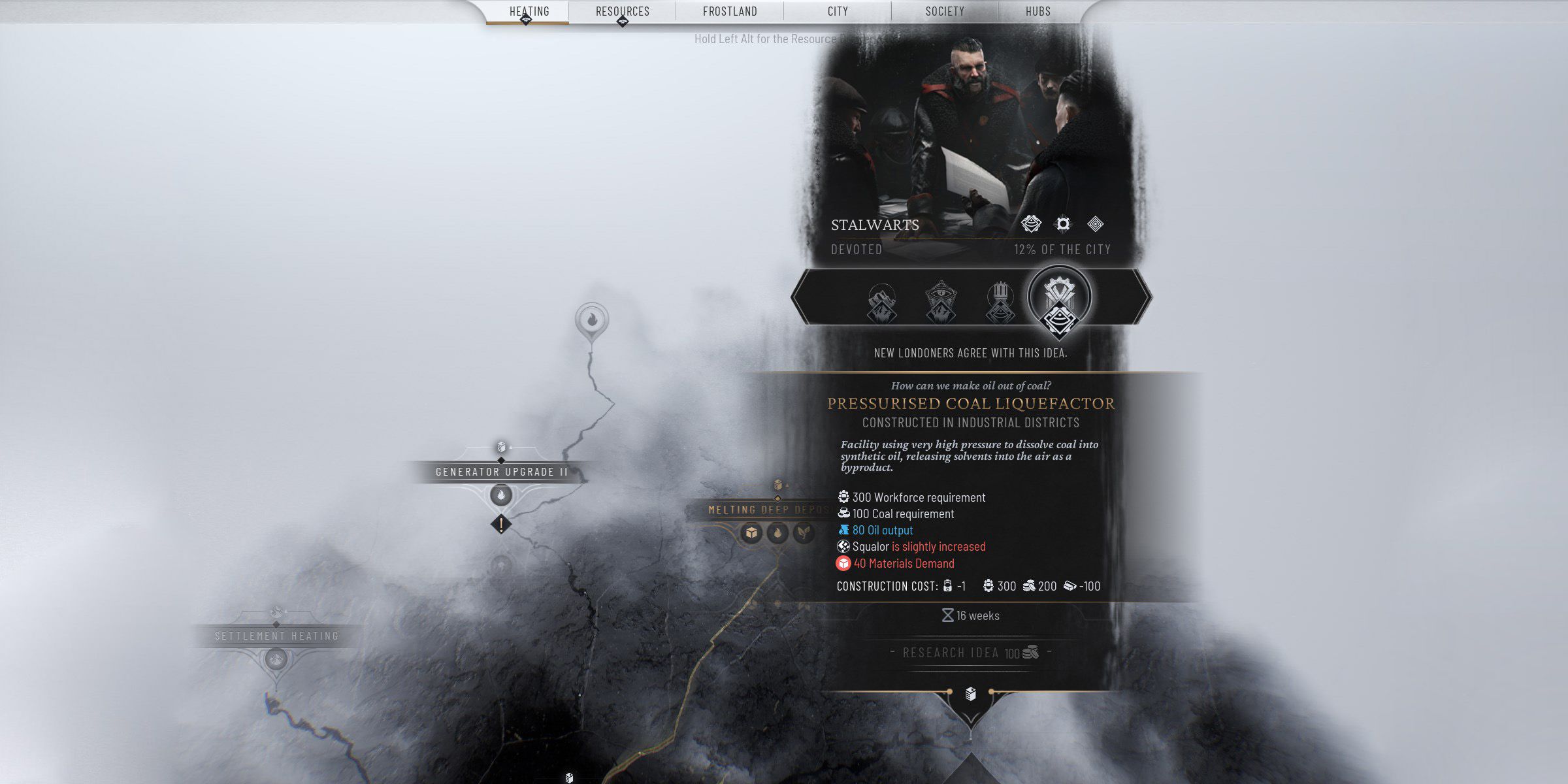A great city building game set in the distant (or not so distant) apocalyptic future, Frostpunk 2 puts players in a frostbitten world and tasks them to not just survive, but to thrive. This harsh environment doesn’t have many resources for players to utilize, making optimization the best operational methodology.
The starting fuel for the players, at least in story mode, is coal. Coal can be extracted from valuable resource nodes using the Extraction district. Once players progress to a certain point in the story, coal reserves become redundant because of the discovery of oil, a much more efficient fuel.
How To Get Oil In Frostpunk 2
Oil is a second tier resource that players cannot access at the start of the story mode. To find it, players must navigate the Frostlands and find the Old Dreadnought colony where oil can be extracted from the wells.
Once players do get oil, they finish chapter one, getting the option to either defeat the frost, or embrace it. If you choose to defeat the frost, your generator will convert completely to oil, making coal a redundant resource, at least until you can convert it into oil.
Is Oil Better Than Coal In Frostpunk 2?
The short answer is yes, absolutely. There’s no reason to persist on a coal-based engine other than the lack of plentiful oil in the region. At the end of the day, these resources serve one purpose; generating enough heat to sustain the population and expand the city.
Where burning 1 coal generates 1 point of heat, after the appropriate upgrade, 1 oil generates 5 heat, making it a marked improvement from coal. After researching Pumpjack, under the Heating research tree, players can even utilize the excess oil that they have in reserve for higher production in different districts.
How To Convert Coal Into Oil In Frostpunk 2
Even if you don’t defeat the frost, there’s good reason to convert as much of your coal into oil as you can. Without the engine upgrade, oil is twice as efficient as coal, and all coal can be converted into oil, making it a waste to use coal directly.
Fuel Stockpile Hubs
will let players increase their storage capacity for both types of fuel.
You’ll need to research Coal Liquefactors, found within the Heating research tree, to gain access to Liquefactors — buildings that convert coal into oil. This research costs 100 Heatstamps, and the building itself costs 1 Core, 200 Heatstamps, and 100 Prefab to build.
Depending on the type of Liquefactor you researched — Carrion or Pressurised — the workforce required can be 400 or 300, respectively. The output of these buildings is somewhat low, and the biggest drawback is that they require a core to build, but they are worthwhile investments considering the upsides.
How To Use Coal Liquefactors In Frostpunk 2
The Coal Liquefactor is a building that can be constructed in the Industrial District. It cannot be placed in the Extraction or Residential district, but the good news is that it doesn’t take up a production slot for the Industrial district. This means you can continue producing Prefabs or Goods alongside the oil in the same district without messing with the settings at all.
By default, the
generator will use the most efficient fuel source first
before switching to a less efficient alternative, meaning you don’t have to worry about changing any of its settings either.
After you’ve set up the building, it will automatically start converting coal into oil. As long as you have enough coal, this process will happen on its own. The Liquefactor can only produce 80 Oil, making it quite inefficient. To meet your needs, you’ll need to build as many Liquefactors as you can.
This will require you to have a robust Frostland exploration team with fully kitted out logistics districts, since you’ll need to send out multiple expeditions to gather as many cores as possible to increase the number of Coal Liquefactors in your city.








